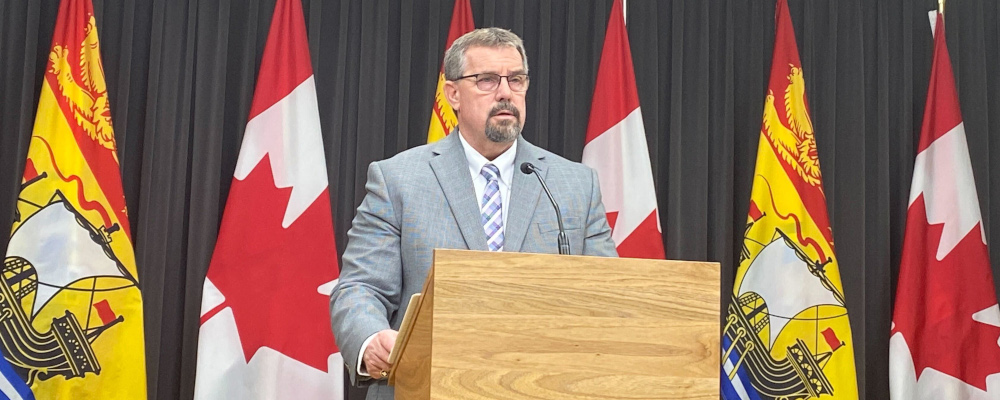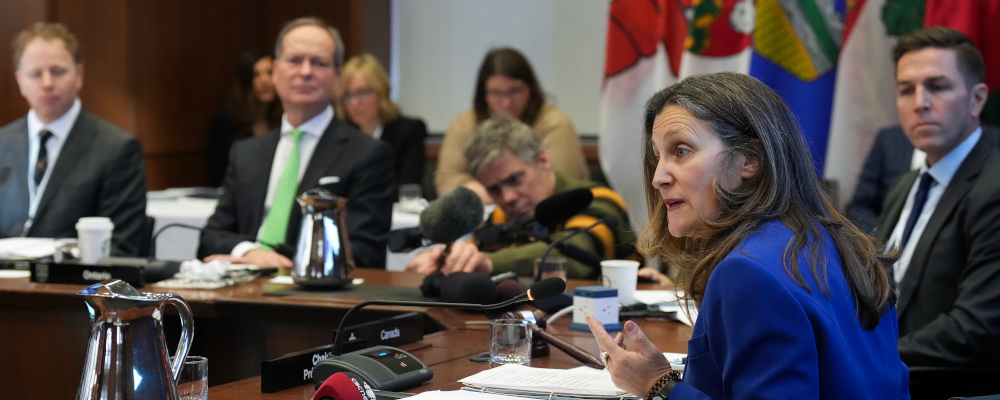Tampering with French Immersion is a perilous undertaking in K-12 education. In New Brunswick, Canada’s only officially bilingual province, it is proving to be like “touching the third rail” in education politics. A proposed plan to change French-language education by eliminating French Immersion in New Brunswick’s Anglophone schools is being overridden by a firestorm of popular resistance.
A series of four scheduled and managed public consultations from January 17-26 attracted huge crowds and not only sparked a backlash, but sent Minister of Education Bill Hogan reeling and put the Blaine Higgs’ Progressive Conservative government at risk. It was exposed by the Canadian Parents for French NB as a rather ineffective attempt to apply the Delphi Technique—a decision-making strategy that utilizes seating in circles and is conceptualized as a learning activity that is designed to contain and diffuse dissent.
Why managed consultation imploded
As a strategy for managing public consultations, popularly known as the “World Café,” it essentially crashed and burned. The overwhelming majority of parent and teacher participants saw it as a “con job” and every speaker denounced the plan to introduce the changes in kindergarten and grade one, beginning in September 2023. Manufacturing consent can and does backfire, especially when utilized in a thinly-veiled fashion to ram through school reforms or facilitate school facility changes such as school closures.
Organizers in New Brunswick were totally unprepared for the crowd, mobbed by speakers, and unable to answer fundamental questions. A harried-looking education minister went on the defensive, first threatening to dismiss the unruly crowd, then conceding that, if not enough French teachers could be found, it would be started in grade 1 and delayed at the kindergarten level. By the end of the consultations, he was now insisting it was “not cast in stone.”
Education Minister Hogan has been dealt a bad hand. Appointed in October 2022 to succeed Dominic Cardy, a confident, fluently-bilingual public performer, he finds himself fronting a massively unpopular French language education initiative that is opposed by as many as three out of four New Brunswickers. What’s worse is that a rushed implementation is planned for September 2023 and the initial 22-odd Language Learning Opportunities (LLO) pilot programs were never properly assessed in terms of their effectiveness in improving the fluency and proficiency of students.
Signs of implementation disaster
The minister and his deputy minister, John MacLaughlin, were left scrambling under the glare of extensive media coverage. All the signs point to either a full retreat or an impending implementation disaster. After two years of planning and almost two dozen pilot projects, how did it come apart so fast?
The sacking of Cardy deprived Premier Higgs of his most effective and persuasive communicator and the department never recovered. Without Cardy fronting the project, the remaining trust dissolved among French-speaking New Brunswickers as well as the province’s most articulate Anglophone bilingualism advocates, French immersion parents, and graduates.
Political skeletons sometimes get released from their closets at the most inopportune times. Few remembered Blaine Higgs’ 1989 Confederation of Regions leadership campaign pledge to eliminate immersion until it resurfaced again in a politically-damaging October 2022 commentary. From that point on, the fix was in on the high-risk policy proposal.
Absorbing the school reform lessons
Education Minister Hogan and his senior officials have broken all the rules in the textbook on how to implement successful education reforms. It’s all neatly synthesized in one of my favourite sources, David Tyack and Larry Cuban’s 1995 modern classic, Tinkering Toward Utopia. It begins by taking stock of previous initiatives and learning from the past.
In the case of New Brunswick and French immersion, that means asking whether any other Canadian province has ever succeeded in eliminating the program and learning from past mistakes. The prime example would be former Minister Kelly Lamrock’s politically-bruising attempt in 2008 to delay the entry point to grade 6, then grade 3, before eventually abandoning it in the face of fierce opposition. Then, as now, it was all based upon the claim that the province was, according to Maclean’s “failing miserably at graduating bilingual students.”
Education reform initiatives proceed, in stages, from policy talk to policy action to implementation. In the education sector, changes falter mostly during implementation. The key reasons are short timelines, lack of leadership capacity, or insufficient human or resource support to make it work. Implementation is much slower and more complex and governments tend to move on to other priorities. That explains why the evaluation of initiatives, including data-gathering, falls far too often by the wayside.

Overcoming the gravitational pull of the status quo is not easy and, in the words of American education psychologist Robert Evans, most initially embrace change with as much enthusiasm as they do changing a baby. Inspiring and skillful leadership is required to overcome the initial sense of loss and convey a sense of renewed purpose going forward.
Introducing an upgraded universal French language program in place of French immersion is unlikely to work. With an election ahead in the fall of 2024, it all looks to be based upon election cycles rather than policy change cycles. Even if the change in the French language program gets authorized, it will be far too rushed in its implementation, half-baked in conception, and impossible to staff given the dire shortage of French teachers with the requisite competencies.
A better path: deliberative engagement
Public engagement is quite distinct from public consultation in that it, under the right conditions, provides an open approach and a genuine commitment to breaking the mold. Being open, transparent, accountable, and responsive does require unique, well-calibrated skills. In the education leadership field, it often involves unlearning ingrained practices and habits. Finding a common cause, sizing up the conditions, leading with questions rather than answers, and meeting groups where they are are all critical ingredients.
New Brunswick’s disastrous public consultation taught us a fundamental lesson about the critical need to engage citizens and build support for reforms. Canadian public engagement specialist Don Lenihan (Middle Ground Engagement, Ottawa) now calls it “deliberative public engagement.” It may work in New Brunswick if the provincial government realizes that it’s time to start again, from ground zero.
There’s got to be a better path forward in advancing bilingualism through the schools. Deliberative public engagement would be more likely to both find an acceptable and sustainable rapprochement and raise the number of bilingual graduates from Anglophone schools.
Recommended for You

Ginny Roth: J.D. Vance, Pierre Poilievre, and how they slice their economic pie

David Polansky: As President Biden leaves the race, will the Democratic Party hodgepodge hold?

RCMP spending to protect MPs may have risen 112% since 2018, as Canadian politicians face greater rise in threats

Trevor Tombe: Canadians are paying billions in hidden taxes on new homes











